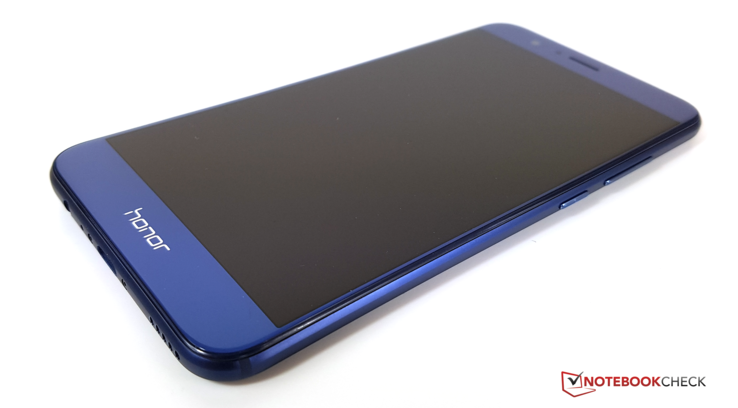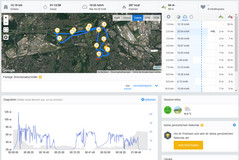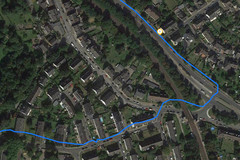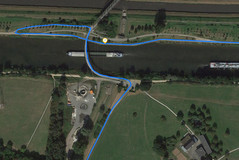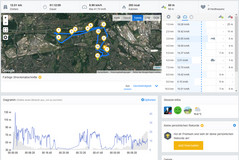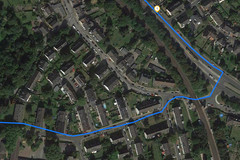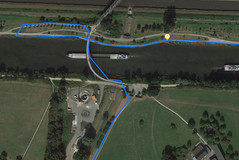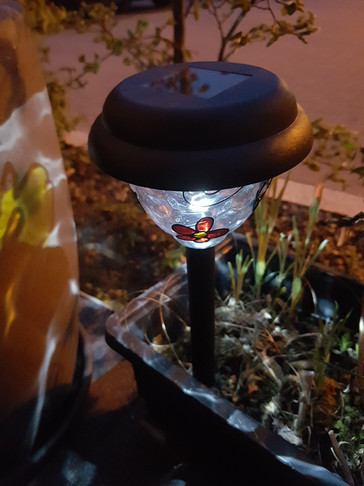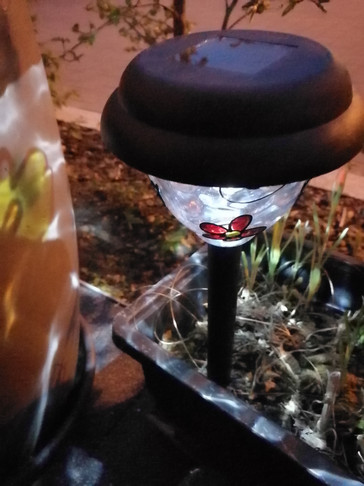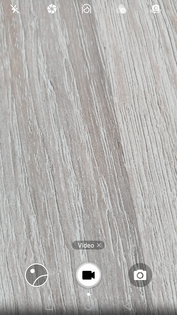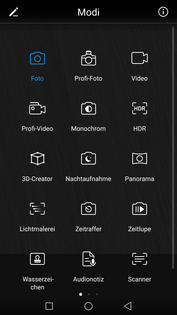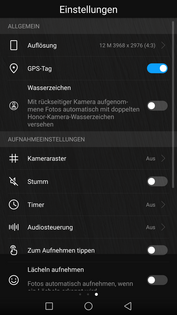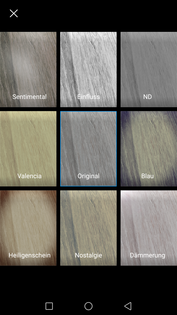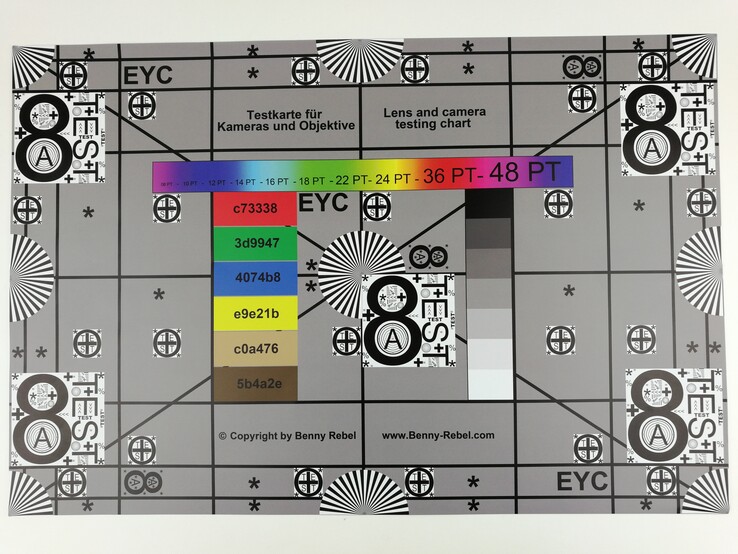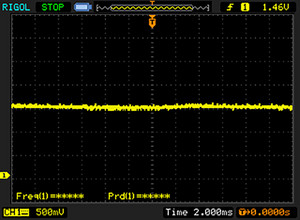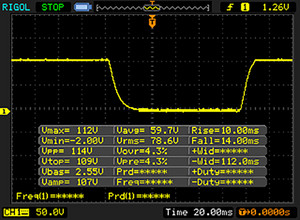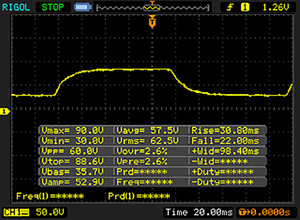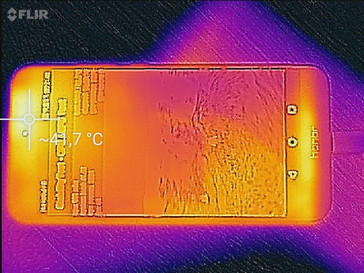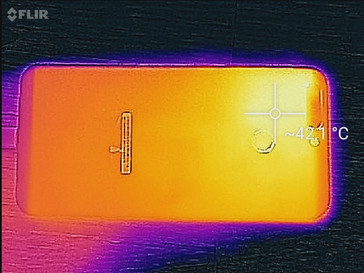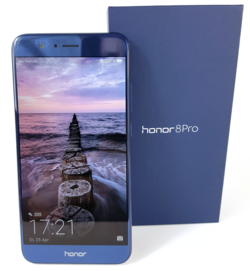Breve análisis del Smartphone Honor 8 Pro
Top 10 Análisis
» Top 10 Portátiles Multimedia
» Top 10 Portátiles de Juego
» Top 10 Portátiles de Juego ligeros
» Top 10 Portátiles Asequibles de Oficina/Empresa
» Top 10 Portátiles de Juego Ligeros
» Top 10 Portátiles de Oficina/Empresa Premium
» Top 10 Estaciones de Trabajo
» Top 10 Subportátiles
» Top 10 Ultrabooks
» Top 10 Convertibles
» Top 10 Tablets
» Top 10 Tablets Windows
» Top 10 Tablets de menos de 250 Euros
» Top 10 Phablets (>5.5")
» Top 10 Smartphones
» Top 10 Smartphones (≤5")
» Top 10 Smartphones de menos de 300 Euros
» Top 10 Smartphones de menos de 120 Euros
» Top 10 Portátiles de menos de 1000 Euros
» Top 10 Portátiles de menos de 500 Euros
» Top 10 Portátiles de menos de 300 Euros
» Los Mejores Displays de Portátiles Analizados por Notebookcheck
| Networking | |
| iperf3 transmit AX12 | |
| Samsung Galaxy S8 Plus | |
| Huawei P10 | |
| Samsung Galaxy S7 Edge | |
| OnePlus 3T | |
| HTC U Play | |
| Honor 8 Pro | |
| iperf3 receive AX12 | |
| Samsung Galaxy S8 Plus | |
| Huawei P10 | |
| Samsung Galaxy S7 Edge | |
| OnePlus 3T | |
| HTC U Play | |
| Honor 8 Pro | |
| |||||||||||||||||||||||||
iluminación: 91 %
Brillo con batería: 541 cd/m²
Contraste: 1803:1 (Negro: 0.3 cd/m²)
ΔE ColorChecker Calman: 3.2 | ∀{0.5-29.43 Ø4.78}
ΔE Greyscale Calman: 4 | ∀{0.09-98 Ø5}
Gamma: 2.27
CCT: 7120 K
| Honor 8 Pro IPS, 2560x1440, 5.7" | Huawei P10 LTPS, 1920x1080, 5.1" | Huawei P9 Plus AMOLED, 1920x1080, 5.5" | HTC U Play Super LCD, 1920x1080, 5.2" | HTC 10 Super LCD 5, 2560x1440, 5.2" | Samsung Galaxy S7 Edge Super AMOLED, 2560x1440, 5.5" | Samsung Galaxy S8 Plus Super AMOLED, 2960x1440, 6.2" | OnePlus 3T Optic-AMOLED, 1920x1080, 5.5" | Lenovo Moto Z AMOLED, 2560x1440, 5.5" | |
|---|---|---|---|---|---|---|---|---|---|
| Screen | -19% | -34% | -20% | -6% | 30% | 29% | -59% | 13% | |
| Brightness middle (cd/m²) | 541 | 547 1% | 361 -33% | 424 -22% | 445 -18% | 554 2% | 560 4% | 421 -22% | 485 -10% |
| Brightness (cd/m²) | 514 | 556 8% | 366 -29% | 432 -16% | 434 -16% | 552 7% | 562 9% | 430 -16% | 490 -5% |
| Brightness Distribution (%) | 91 | 86 -5% | 87 -4% | 90 -1% | 93 2% | 96 5% | 93 2% | 84 -8% | 92 1% |
| Black Level * (cd/m²) | 0.3 | 0.43 -43% | 0.25 17% | 0.36 -20% | |||||
| Contrast (:1) | 1803 | 1272 -29% | 1696 -6% | 1236 -31% | |||||
| Colorchecker dE 2000 * | 3.2 | 4.8 -50% | 5.1 -59% | 5.7 -78% | 2.8 12% | 1.59 50% | 1.7 47% | 7.1 -122% | 2.1 34% |
| Colorchecker dE 2000 max. * | 7.2 | 8.8 -22% | 10 -39% | 10.8 -50% | 5.8 19% | 2.56 64% | 3.4 53% | 15.3 -113% | 5.5 24% |
| Greyscale dE 2000 * | 4 | 4.5 -13% | 5.5 -38% | 4.1 -3% | 3.7 7% | 2.01 50% | 1.6 60% | 6.8 -70% | 2.6 35% |
| Gamma | 2.27 97% | 2.39 92% | 2.24 98% | 2.32 95% | 2.31 95% | 2.01 109% | 2.13 103% | 2.23 99% | 2.23 99% |
| CCT | 7120 91% | 7194 90% | 7388 88% | 7359 88% | 7164 91% | 6321 103% | 6435 101% | 7866 83% | 6843 95% |
| Color Space (Percent of AdobeRGB 1998) (%) | 82.12 | 81.57 | 88.14 | ||||||
| Color Space (Percent of sRGB) (%) | 99.98 | 99.87 | 100 |
* ... más pequeño es mejor
Parpadeo de Pantalla / PWM (Pulse-Width Modulation)
| Parpadeo de Pantalla / PWM no detectado | |||
Comparación: 53 % de todos los dispositivos testados no usaron PWM para atenuar el display. Si se usó, medimos una media de 8098 (mínimo: 5 - máxmo: 343500) Hz. | |||
Tiempos de respuesta del display
| ↔ Tiempo de respuesta de Negro a Blanco | ||
|---|---|---|
| 24 ms ... subida ↗ y bajada ↘ combinada | ↗ 10 ms subida | |
| ↘ 14 ms bajada | ||
| La pantalla mostró buenos tiempos de respuesta en nuestros tests pero podría ser demasiado lenta para los jugones competitivos. En comparación, todos los dispositivos de prueba van de ##min### (mínimo) a 240 (máximo) ms. » 53 % de todos los dispositivos son mejores. Eso quiere decir que el tiempo de respuesta es peor que la media (20.2 ms) de todos los dispositivos testados. | ||
| ↔ Tiempo de respuesta 50% Gris a 80% Gris | ||
| 52.8 ms ... subida ↗ y bajada ↘ combinada | ↗ 30.8 ms subida | |
| ↘ 22 ms bajada | ||
| La pantalla mostró tiempos de respuesta lentos en nuestros tests y podría ser demasiado lenta para los jugones. En comparación, todos los dispositivos de prueba van de ##min### (mínimo) a 636 (máximo) ms. » 89 % de todos los dispositivos son mejores. Eso quiere decir que el tiempo de respuesta es peor que la media (31.6 ms) de todos los dispositivos testados. | ||
| AnTuTu v6 - Total Score (ordenar por valor) | |
| Honor 8 Pro | |
| Huawei P10 | |
| Huawei P9 Plus | |
| HTC U Play | |
| HTC 10 | |
| Samsung Galaxy S7 Edge | |
| Samsung Galaxy S8 Plus | |
| OnePlus 3T | |
| Lenovo Moto Z | |
| Geekbench 4.0 | |
| 64 Bit Single-Core Score (ordenar por valor) | |
| Huawei P10 | |
| HTC U Play | |
| Samsung Galaxy S7 Edge | |
| Samsung Galaxy S8 Plus | |
| OnePlus 3T | |
| Lenovo Moto Z | |
| 64 Bit Multi-Core Score (ordenar por valor) | |
| Huawei P10 | |
| HTC U Play | |
| Samsung Galaxy S7 Edge | |
| Samsung Galaxy S8 Plus | |
| OnePlus 3T | |
| Lenovo Moto Z | |
| Geekbench 4.4 | |
| 64 Bit Multi-Core Score (ordenar por valor) | |
| Honor 8 Pro | |
| Huawei P10 | |
| HTC 10 | |
| Samsung Galaxy S8 Plus | |
| 64 Bit Single-Core Score (ordenar por valor) | |
| Honor 8 Pro | |
| Huawei P10 | |
| HTC 10 | |
| Samsung Galaxy S8 Plus | |
| GFXBench (DX / GLBenchmark) 2.7 | |
| T-Rex Onscreen (ordenar por valor) | |
| Honor 8 Pro | |
| Huawei P10 | |
| Huawei P9 Plus | |
| HTC U Play | |
| HTC 10 | |
| Samsung Galaxy S7 Edge | |
| Samsung Galaxy S8 Plus | |
| OnePlus 3T | |
| Lenovo Moto Z | |
| 1920x1080 T-Rex Offscreen (ordenar por valor) | |
| Honor 8 Pro | |
| Huawei P10 | |
| Huawei P9 Plus | |
| HTC U Play | |
| HTC 10 | |
| Samsung Galaxy S7 Edge | |
| Samsung Galaxy S8 Plus | |
| OnePlus 3T | |
| Lenovo Moto Z | |
| GFXBench 3.0 | |
| on screen Manhattan Onscreen OGL (ordenar por valor) | |
| Honor 8 Pro | |
| Huawei P10 | |
| Huawei P9 Plus | |
| HTC U Play | |
| HTC 10 | |
| Samsung Galaxy S7 Edge | |
| Samsung Galaxy S8 Plus | |
| OnePlus 3T | |
| Lenovo Moto Z | |
| 1920x1080 1080p Manhattan Offscreen (ordenar por valor) | |
| Honor 8 Pro | |
| Huawei P10 | |
| Huawei P9 Plus | |
| HTC U Play | |
| HTC 10 | |
| Samsung Galaxy S7 Edge | |
| Samsung Galaxy S8 Plus | |
| OnePlus 3T | |
| Lenovo Moto Z | |
| GFXBench 3.1 | |
| on screen Manhattan ES 3.1 Onscreen (ordenar por valor) | |
| Honor 8 Pro | |
| Huawei P10 | |
| Huawei P9 Plus | |
| HTC U Play | |
| HTC 10 | |
| Samsung Galaxy S7 Edge | |
| Samsung Galaxy S8 Plus | |
| OnePlus 3T | |
| Lenovo Moto Z | |
| 1920x1080 Manhattan ES 3.1 Offscreen (ordenar por valor) | |
| Honor 8 Pro | |
| Huawei P10 | |
| Huawei P9 Plus | |
| HTC U Play | |
| HTC 10 | |
| Samsung Galaxy S7 Edge | |
| Samsung Galaxy S8 Plus | |
| OnePlus 3T | |
| Lenovo Moto Z | |
| PCMark for Android - Work performance score (ordenar por valor) | |
| Honor 8 Pro | |
| Huawei P10 | |
| Huawei P9 Plus | |
| HTC U Play | |
| HTC 10 | |
| Samsung Galaxy S7 Edge | |
| Samsung Galaxy S8 Plus | |
| OnePlus 3T | |
| Lenovo Moto Z | |
| Octane V2 - Total Score | |
| Samsung Galaxy S8 Plus | |
| Samsung Galaxy S7 Edge | |
| Huawei P9 Plus | |
| Huawei P10 | |
| Honor 8 Pro | |
| OnePlus 3T | |
| HTC 10 | |
| Lenovo Moto Z | |
| HTC U Play | |
| Mozilla Kraken 1.1 - Total | |
| HTC U Play | |
| Honor 8 Pro | |
| Lenovo Moto Z | |
| HTC 10 | |
| Huawei P10 | |
| Huawei P9 Plus | |
| OnePlus 3T | |
| Samsung Galaxy S7 Edge | |
| Samsung Galaxy S8 Plus | |
| JetStream 1.1 - Total Score | |
| Samsung Galaxy S7 Edge | |
| Huawei P9 Plus | |
| Samsung Galaxy S8 Plus | |
| Honor 8 Pro | |
| Huawei P10 | |
| OnePlus 3T | |
| HTC 10 | |
| Lenovo Moto Z | |
| HTC U Play | |
| WebXPRT 2015 - Overall | |
| Samsung Galaxy S7 Edge | |
| Samsung Galaxy S8 Plus | |
| Honor 8 Pro | |
| Huawei P10 | |
| OnePlus 3T | |
| Huawei P9 Plus | |
| Lenovo Moto Z | |
| HTC 10 | |
* ... más pequeño es mejor
| Honor 8 Pro Mali-G71 MP8, Kirin 960, 64 GB UFS 2.1 Flash | Huawei P10 Mali-G71 MP8, Kirin 960, 64 GB UFS 2.1 Flash | Huawei P9 Plus Mali-T880 MP4, Kirin 955, 64 GB eMMC Flash | HTC U Play Mali-T860 MP2, Helio P10 MT6755, 32 GB eMMC Flash | HTC 10 Adreno 530, 820 MSM8996, 32 GB eMMC Flash | Samsung Galaxy S7 Edge Mali-T880 MP12, Exynos 8890, 32 GB UFS 2.0 Flash | Samsung Galaxy S8 Plus Mali-G71 MP20, Exynos 8895, 64 GB UFS 2.1 Flash | OnePlus 3T Adreno 530, SD 821, 64 GB UFS 2.0 Flash | Lenovo Moto Z Adreno 530, 820 MSM8996, 32 GB eMMC Flash | |
|---|---|---|---|---|---|---|---|---|---|
| AndroBench 3-5 | 0% | -39% | -51% | -19% | -16% | 1% | -33% | -7% | |
| Sequential Write 256KB SDCard (MB/s) | 32.16 | 32.19 0% | 24.95 -22% | 23.6 -27% | 65.4 103% | 50.4 57% | 57.2 78% | 45.64 42% | |
| Sequential Read 256KB SDCard (MB/s) | 54.2 | 54.2 0% | 62.5 15% | 36.8 -32% | 83.3 54% | 76.4 41% | 71.1 31% | 78.5 45% | |
| Random Write 4KB (MB/s) | 151.6 | 152.3 0% | 51.2 -66% | 52.7 -65% | 15.89 -90% | 15.79 -90% | 15.27 -90% | 74.4 -51% | 74.9 -51% |
| Random Read 4KB (MB/s) | 166.4 | 168.4 1% | 39.33 -76% | 32 -81% | 29.92 -82% | 86.7 -48% | 127.2 -24% | 123.6 -26% | 117.2 -30% |
| Sequential Write 256KB (MB/s) | 187.1 | 189.8 1% | 140.4 -25% | 135.5 -28% | 115.6 -38% | 145.1 -22% | 194.2 4% | 165.3 -12% | 168.3 -10% |
| Sequential Read 256KB (MB/s) | 738 | 738 0% | 284.3 -61% | 197.3 -73% | 275.1 -63% | 487.3 -34% | 788 7% | 436.4 -41% | 439.7 -40% |
| Dead Trigger 2 | |||
| Configuraciones | Valor | ||
| high | 30 fps | ||
| Asphalt 8: Airborne | |||
| Configuraciones | Valor | ||
| high | 29 fps | ||
| very low | 29 fps | ||
(±) La temperatura máxima en la parte superior es de 44.8 °C / 113 F, frente a la media de 35.2 °C / 95 F, que oscila entre 21.9 y 247 °C para la clase Smartphone.
(±) El fondo se calienta hasta un máximo de 41.2 °C / 106 F, frente a la media de 34 °C / 93 F
(±) En reposo, la temperatura media de la parte superior es de 33.3 °C / 92# F, frente a la media del dispositivo de 32.9 °C / 91 F.
Honor 8 Pro análisis de audio
(+) | los altavoces pueden reproducir a un volumen relativamente alto (#82.4 dB)
Graves 100 - 315 Hz
(-) | casi sin bajos - de media 25.4% inferior a la mediana
(-) | los graves no son lineales (15.3% delta a la frecuencia anterior)
Medios 400 - 2000 Hz
(+) | medios equilibrados - a sólo 3.4% de la mediana
(+) | los medios son lineales (6% delta a la frecuencia anterior)
Altos 2 - 16 kHz
(±) | máximos más altos - de media 5.4% más altos que la mediana
(±) | la linealidad de los máximos es media (7% delta a frecuencia anterior)
Total 100 - 16.000 Hz
(±) | la linealidad del sonido global es media (23.6% de diferencia con la mediana)
En comparación con la misma clase
» 53% de todos los dispositivos probados de esta clase eran mejores, 8% similares, 39% peores
» El mejor tuvo un delta de 11%, la media fue 35%, el peor fue ###max##%
En comparación con todos los dispositivos probados
» 70% de todos los dispositivos probados eran mejores, 6% similares, 24% peores
» El mejor tuvo un delta de 4%, la media fue 24%, el peor fue ###max##%
Huawei P10 análisis de audio
(+) | los altavoces pueden reproducir a un volumen relativamente alto (#82.7 dB)
Graves 100 - 315 Hz
(-) | casi sin bajos - de media 20.9% inferior a la mediana
(±) | la linealidad de los graves es media (12.6% delta a frecuencia anterior)
Medios 400 - 2000 Hz
(+) | medios equilibrados - a sólo 4.2% de la mediana
(+) | los medios son lineales (6% delta a la frecuencia anterior)
Altos 2 - 16 kHz
(±) | máximos más altos - de media 5.5% más altos que la mediana
(+) | los máximos son lineales (4.9% delta a la frecuencia anterior)
Total 100 - 16.000 Hz
(±) | la linealidad del sonido global es media (23.6% de diferencia con la mediana)
En comparación con la misma clase
» 53% de todos los dispositivos probados de esta clase eran mejores, 8% similares, 39% peores
» El mejor tuvo un delta de 11%, la media fue 35%, el peor fue ###max##%
En comparación con todos los dispositivos probados
» 70% de todos los dispositivos probados eran mejores, 6% similares, 24% peores
» El mejor tuvo un delta de 4%, la media fue 24%, el peor fue ###max##%
OnePlus 3T análisis de audio
(+) | los altavoces pueden reproducir a un volumen relativamente alto (#84.3 dB)
Graves 100 - 315 Hz
(-) | casi sin bajos - de media 24.6% inferior a la mediana
(±) | la linealidad de los graves es media (7.2% delta a frecuencia anterior)
Medios 400 - 2000 Hz
(+) | medios equilibrados - a sólo 4.6% de la mediana
(+) | los medios son lineales (4.6% delta a la frecuencia anterior)
Altos 2 - 16 kHz
(±) | máximos más altos - de media 7.1% más altos que la mediana
(+) | los máximos son lineales (2.8% delta a la frecuencia anterior)
Total 100 - 16.000 Hz
(±) | la linealidad del sonido global es media (20.9% de diferencia con la mediana)
En comparación con la misma clase
» 38% de todos los dispositivos probados de esta clase eran mejores, 8% similares, 54% peores
» El mejor tuvo un delta de 11%, la media fue 35%, el peor fue ###max##%
En comparación con todos los dispositivos probados
» 56% de todos los dispositivos probados eran mejores, 8% similares, 36% peores
» El mejor tuvo un delta de 4%, la media fue 24%, el peor fue ###max##%
| Off / Standby | |
| Ocioso | |
| Carga |
|
Clave:
min: | |
| Honor 8 Pro 4000 mAh | Huawei P10 3200 mAh | Huawei P9 Plus 3400 mAh | HTC U Play 2500 mAh | HTC 10 3000 mAh | Samsung Galaxy S7 Edge 3600 mAh | Samsung Galaxy S8 Plus 3500 mAh | OnePlus 3T 3400 mAh | Lenovo Moto Z 2600 mAh | |
|---|---|---|---|---|---|---|---|---|---|
| Power Consumption | 8% | 35% | 23% | 15% | 33% | 42% | 15% | 40% | |
| Idle Minimum * (Watt) | 0.98 | 0.83 15% | 0.87 11% | 0.92 6% | 0.68 31% | 0.63 36% | 0.68 31% | 0.61 38% | 0.66 33% |
| Idle Average * (Watt) | 2.27 | 2.1 7% | 1.2 47% | 1.84 19% | 1.49 34% | 1.1 52% | 1.13 50% | 1.77 22% | 1.01 56% |
| Idle Maximum * (Watt) | 2.36 | 2.18 8% | 1.27 46% | 2 15% | 1.91 19% | 1.56 34% | 1.16 51% | 1.81 23% | 1.09 54% |
| Load Average * (Watt) | 6.58 | 6.57 -0% | 4.69 29% | 4.3 35% | 7.4 -12% | 5.95 10% | 4.69 29% | 6.67 -1% | 3.97 40% |
| Load Maximum * (Watt) | 10.12 | 9.32 8% | 5.63 44% | 6.2 39% | 9.71 4% | 6.7 34% | 5.24 48% | 10.98 -8% | 8.34 18% |
* ... más pequeño es mejor
| Honor 8 Pro 4000 mAh | Huawei Mate 9 4000 mAh | Huawei P10 3200 mAh | Huawei P9 Plus 3400 mAh | HTC U Play 2500 mAh | HTC 10 3000 mAh | Samsung Galaxy S8 Plus 3500 mAh | OnePlus 3T 3400 mAh | Lenovo Moto Z 2600 mAh | |
|---|---|---|---|---|---|---|---|---|---|
| Duración de Batería | 26% | 16% | 15% | -6% | -7% | 26% | 16% | 14% | |
| Reader / Idle (h) | 23 | 25.6 11% | 25.7 12% | 24.1 5% | 21.7 -6% | 21.2 -8% | 26.1 13% | 23.7 3% | 22.9 0% |
| H.264 (h) | 11.3 | 15.8 40% | 9.7 -14% | 12.9 14% | 8.6 -24% | 10.8 -4% | 12.4 10% | 13.5 19% | 12.1 7% |
| WiFi v1.3 (h) | 9.6 | 12.6 31% | 16.1 68% | 8.8 -8% | 7.9 -18% | 6.9 -28% | 12.3 28% | 8.2 -15% | 6.8 -29% |
| Load (h) | 3 | 3.7 23% | 2.9 -3% | 4.4 47% | 3.7 23% | 3.4 13% | 4.6 53% | 4.7 57% | 5.3 77% |
Pro
Contra
El Honor 8 Pro es un smartphone gama alta ópticamente muy exitoso y bien construido con un rendimiento de sistema excelente. Comparado con los dispositivos actuales de gama alta y algunos de la cosecha pasada, tenemos que conformarnos con menos en muchos sitios, a pesar de su amplia RAM de 6 GB.
En el Honor 8 Pro, no vemos (aún) la excelente relación precio-rendimiento que ha hecho famosa a los dispositivos Honor. Los smartphones gama alta del año pasado (tales como el Samsung Galaxy S7 Edge) a veces ofrecen un mejor paquete en general por menos dinero, habida cuenta que esos dispositivos han pasado ya su mayor bajada de precio.
Características tales como Bluetooth 4.2 en vez de 5.0, la gráfica relativamente "débil", una cámara frontal sin auto-focus, y el estándar USB-2.0 diferencian al Honor 8 Pro de los actuales smartphones insignia de otros fabricantes. Además, ni se puede cargar la batería inalámbricamente, ni el dispositivo está certificado según el estándar IP de protección frente al polvo y al agua. Los bordes de la carcasa son ligeramente largos y la r4elación display-frontal es relativamente ineficiente, al menos para un dispositivo de 2017.
Con todo, el Honor 8 Pro es un smartphone muy exitoso y una alternativa recomendable a los dispositivos Huawei P10. Pero a nuestro parecer no es un ataque al Olimpo smartphone de 2017.
A pesar de ello, las políticas de Huawei de eliminar componentes hardware dejan un mal sabor de boca – si todos los compradores del Honor-8-Pro disfrutarán del moderno almacenamiento UFS-2.1 es al menos cuestionable.
Ésta es una versión acortada del análisis original. Puedes leer el análisis completo en inglés aquí.
Honor 8 Pro
- 05/04/2017 v6 (old)
Marcus Herbrich




